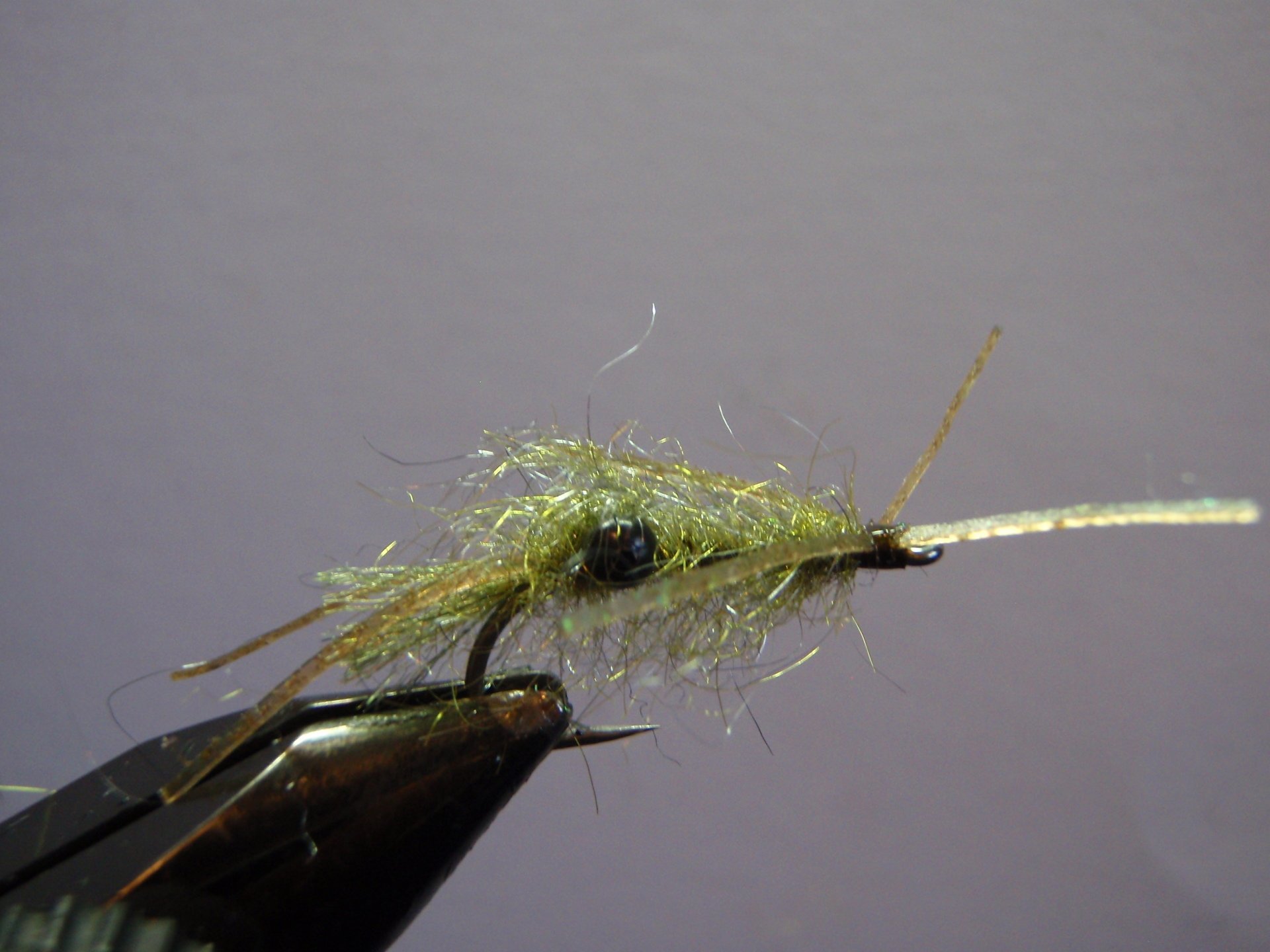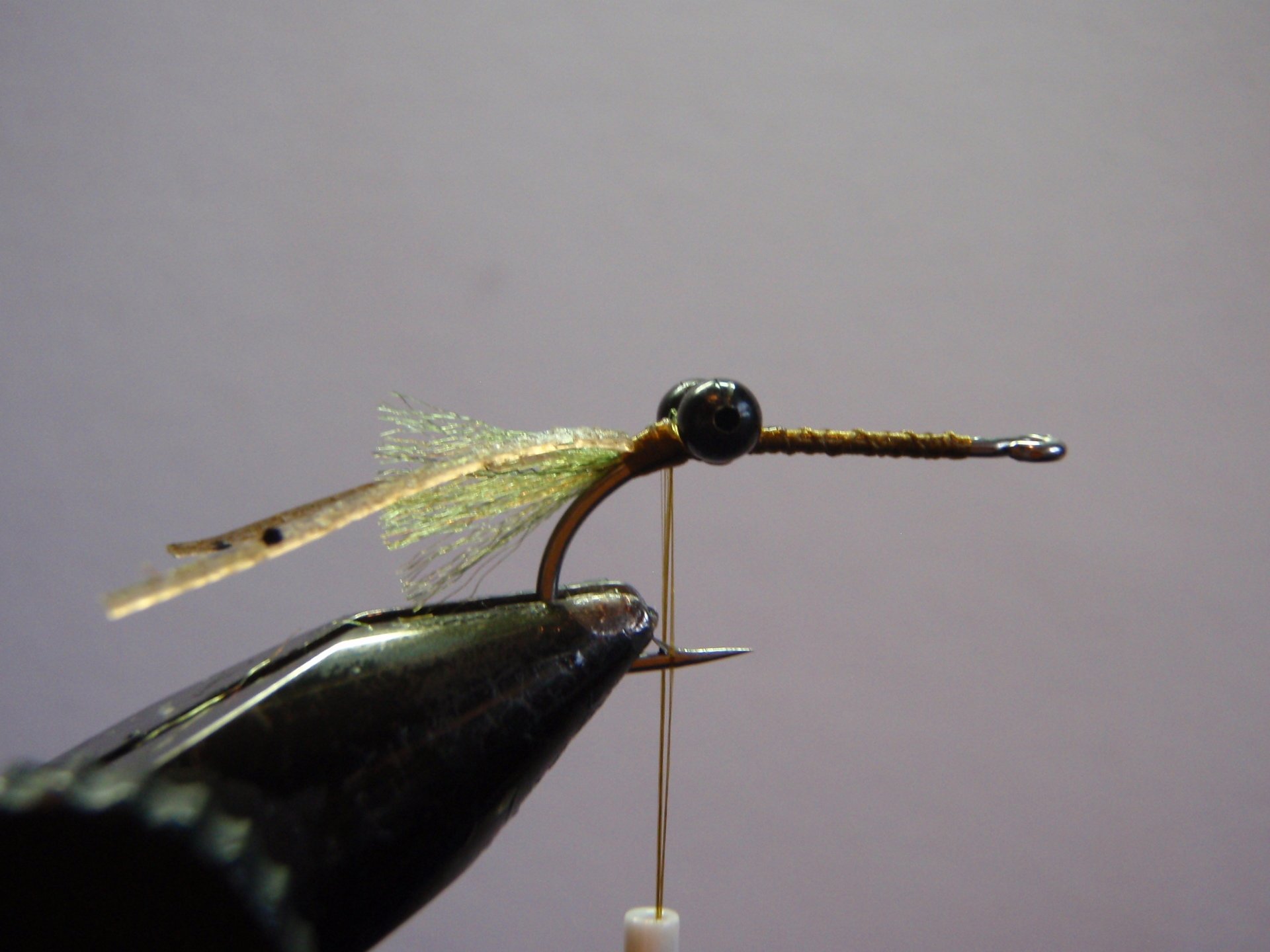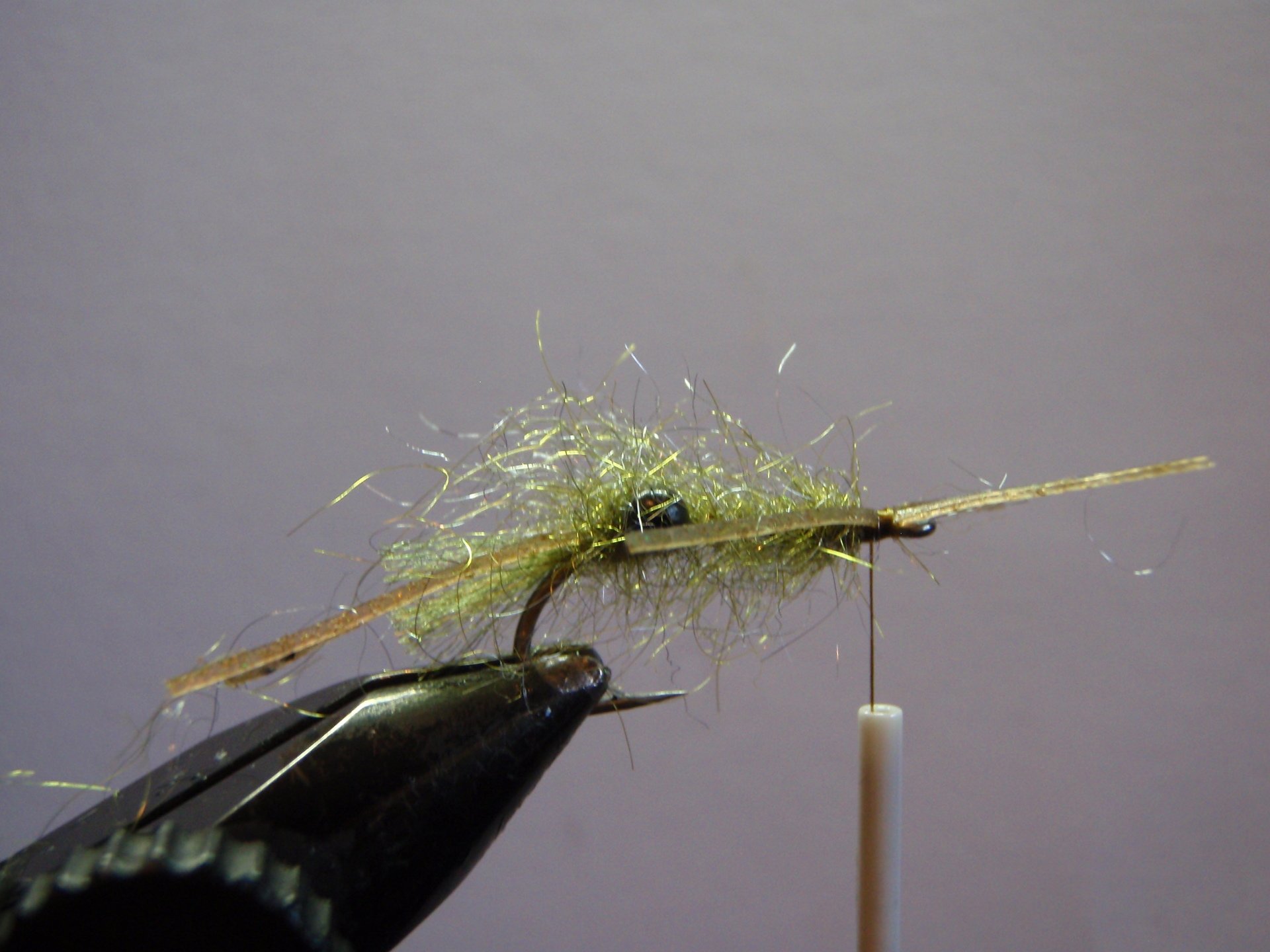
Pesca Squimp

This simple variation of the original Squimp fly is a very productive pattern for catching tailing or cruising bonefish on shallow water flats. Designed to land lightly, sink relatively slowly and blend into the local environment, like natural prey, this stealthy pattern is especially effective when targeting fish feeding on the turtle grass flats found in Belize and Mexico.
Materials
Hook: Daiichi 2546 - size 6
Thread: UTC Ultra 140 - olive
Eyes: Beadchain - medium; black
Mouth: EP Silky Fibers - 3D reddish olive
Body: SLF saltwater dubbing blend - smokey olive
Legs: Loco legs - green turtle grass
Adhesive: Gorilla super glue gel and Solarez UV-cure thin
Tying Instructions

Step 1.
Insert the hook in the vise. Attach the thread and wrap back to the point half way between the barb and the point of the hook.

Step 2.
Place a drop of super glue gel on the thread wraps and then figure eight wrap the beadchain eyes to the top of the hook (This fly rides hook point up).

Step 3.
Tie in a small bunch of EP silky fibers, on top of the hook, starting at a point directly behind the eyes and wrap the thread over the fibers to a point slightly past the bend of the hook. Trim the fibers to the length of approximately one hook gap.

Step 4.
Return the thread to the point right behind the eyes.

Step 5.Loop a single strand of loco legs around the thread and tie them in so they extend off the hook about a hook shank in length.

Step 6.
Spin a dubbing noodle of SLF saltwater dubbing blend and proceed to wrap the dubbing forward, forming a sparsely dubbed body, to a point one eye width behind the hook eye. Make sure to stroke the dubbing fibers back after each wrap so as not to trap any fibers during the subsequent wraps. Also, remember to figure eight the dubbing noodle around the beadchain eyes to cover up the thread wraps.

Step 7.
Tie off the dubbing noodle at the front of the hook with 4 or 5 thread wraps forming the start of a thread head.

Step 8.
Tie in half a strand of loco leg on each side of the thread head so that half of the leg extends along the side of the fly and the other half extends out past the hook eye.

Step 9.
Build up a small thread head in front of the legs so they splay out slightly.

Step 10.
Whip finish and coat the threads with head cement or Solarez UV-cure thin.
Your Pesca Squimp is now complete and you are ready to head out On The Water!
Your Pesca Squimp is now complete and you are ready to head out On The Water!



